Energy
In the halls of Parliament, Ellis Ross may be the most high-profile advocate of Indigenous-led development in Canada.
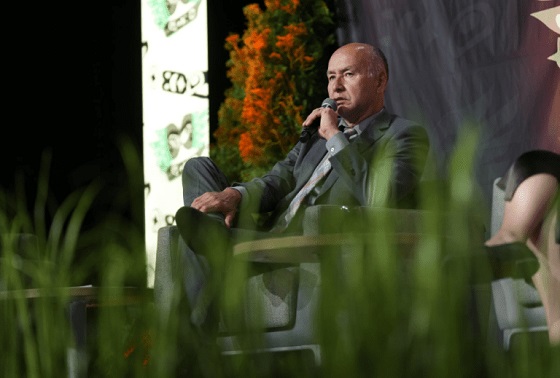
From Resource Works
“We’re not talking about reconciliation anymore…we’re talking about prosperity, and making sure it lasts.”
Ellis Ross stepped onto the stage at the Vancouver Convention Centre last year. He didn’t reach for notes, and spoke plainly to the audience of business leaders, chiefs, and policymakers gathered for the Indigenous Partnerships Success Showcase (IPSS).
“I’m very proud to say that my band, the Haisla Band, is no longer talking about unemployment, poverty, reconciliation,” Ross said. “We’re talking about the management of wealth.”
Ross’s message was equal parts challenge and triumph, and was followed by a standing ovation for a man who has lived the slow climb from the margins to the mainstream. Once a water-taxi operator in Kitamaat Village, he is now one of the country’s most influential Indigenous political figures.
As he returns as a featured guest to this year’s IPSS, Ross embodies the event’s core theme: Shared Prosperity Now.
Born and raised in the Haisla Nation near Kitimat, Ross spent his early life in a community scarred by unemployment and a lack of opportunity.
“We had nothing,” Ross told the Arc Energy Ideas podcast last year. “We were begging for money, begging for infrastructure. We were one of the poorest bands in British Columbia.” Under his leadership, that changed forever.

As Haisla chief councillor from 2011 to 2017, Ross helped transform his community through industry partnerships rooted in resource development. He rejecting the old idea that development was a natural enemy of culture, and steered the Haisla into the energy economy on their own terms by embracing liquefied natural gas (LNG).
The Cedar LNG project, co-owned by the Haisla Nation and Pembina Pipeline, will become the largest Indigenous-majority-owned energy project in Canada’s history.
“It will have one of the lowest carbon footprints in the world,” said Crystal Smith, Ross’ successor as Haisla Chief Councillor. Cedar LNG is scheduled to begin operation in 2028.
For Ross, participation means power.
“If you uplift an Aboriginal community, the biggest beneficiaries, apart from First Nations, are the rest of British Columbia,” he said at IPSS in 2023. “We’ve got no malls or car dealerships on reserves. We spend it in our neighbouring communities.”
Ross’s journey hasn’t been without conflict. Writing in the Times Colonist in 2020, he warned of foreign-funded activists “hijacking our future” by dividing Indigenous communities and undermining resource partnerships.
“The last thing any of us need is intervention from foreign groups that want to hijack our future for their own objectives,” he wrote, condemning the influence of U.S. foundations funnelling money to anti-development campaigns.
He is vehemently opposed to “distraction politics”, and it became a hallmark of Ross’s political career. As MLA for Skeena from 2017 to 2024, Ross built a reputation for straight talk. He was eager to defend both workers and environmental standards for the modern resource industry.

With a pragmatic style, he gained admiration from both business leaders and former premier Christy Clark, who has praised Ross because he “fought for an LNG industry that will be the cleanest, the greenest, and the safest anywhere in the world.”
By early 2024, Ross announced his move to federal politics, saying he wanted to take “the principles I’ve developed over the last 15 years” to Ottawa.
Now the Member of Parliament for Skeena-Bulkley Valley, he’s now one of the most prominent Indigenous voices in the House of Commons, and one of the few with deep experience in both community governance and heavy industry.
Recently, Ross said he plans to hold the federal government to its promise of making Canada an “energy superpower.”
“For the area and for Canada, I want to hold this government accountable for those words,” he told the Prince George Citizen. “Projects like LNG Canada and Cedar LNG can show the world how Indigenous leadership and environmental responsibility go hand in hand.”
Ross’s attendance at IPSS 2025 comes at a moment when Indigenous participation in major projects is reshaping the national economy.
More than two dozen First Nations now hold equity in energy, mining, or infrastructure developments. It is proof that reconciliation, in his view, must be measured not in lofty statements but in actual ownership.
“You’ve got to leave a lot of those old narratives at the door,” he told delegates. “We’re not victims. We’re builders.”
Now, from the carpet of Parliament Hill to the polished floors of the Vancouver Convention Centre, Ellis Ross continues to speak for both the Haisla and the wider coalition of Indigenous and non-Indigenous Canadians who believe in growth through partnership.
As IPSS Event Lead Margareta Dovgal put it, “He bridges worlds—the boardroom, the band office, and the floor of the legislature.”
When Ross steps back onto the IPSS stage this November, expect the same mix of candour and conviction that has defined his career. “
We’re not talking about reconciliation anymore…we’re talking about prosperity, and making sure it lasts.”
Alberta
Fact, fiction, and the pipeline that’s paying Canada’s rent

From Resource Works
Is the Trans Mountain a fake, like some say the moon landing was faked?
It’s hard to interpret otherwise a persistent claim being made in media by British Columbia’s premier, David Eby.
This week he said that Alberta is “not even using” the new Trans Mountain pipeline from Edmonton to Metro Vancouver.


Could that be true? We decided to look into it.
Here’s what we discovered.
Since May 2024 when the Trans Mountain expansion project was opened, Alberta oil has flowed steadily down the pipeline from its origin in a suburb of Edmonton.
Credible international news organizations have reported that the new pipeline is 85% full. Indications are that by the period 2027-28, it will reach as close to 100% full as it’s possible to.
The number of ship calls to the Westridge coastal loading facility in Burnaby is on track to reach 400 by the end of the year. This strongly supports the contention that Alberta oil is flowing through the pipeline.


https://www.statcan.gc.ca/o1/en/plus/8439-trans-mountain-pipeline-delivering
I often say Trans Mountain is “paying Canada’s rent,” and I mean it literally. Ottawa owns the pipeline through Trans Mountain Corporation, and it’s already sending more than a billion dollars a year back to the federal treasury in dividends, interest, and fees.
It’s also boosting export revenues by letting Alberta oil reach world markets instead of being trapped at a discount — raising royalties, taxes, and paycheques across the Prairies. And every tanker that sails from Burnaby keeps tug crews, port workers, and coastal suppliers in business. That’s real money flowing through the economy — the kind that actually pays the rent for Canada.
In total, Resource Works examined nine claims that would all need to be true if Premier Eby is telling the truth about the pipeline being empty:
Truth Test: “Alberta isn’t even using the pipeline we bought them last time.”
| Category | Claim or Implication | Evidence / Data | Source(s) | Finding / Truth Rating |
| 1. Pipeline utilization | TMX is unused or empty. | Trans Mountain reports 757,000 bpd throughput on an 890,000 bpd capacity system (≈ 85 %). | Trans Mountain Q1 2025 Financial Results; Reuters (30 Jul 2025). |  False — pipeline is heavily used and approaching full capacity. False — pipeline is heavily used and approaching full capacity. |
| 2. Export volumes | Few or no shipments. | 306 vessels loaded at Westridge Marine Terminal by Q2 2025 (~20–25 per month). | Trans Mountain Q2 2025 Results; CER Market Snapshot (Sept 2025). |  False — consistent, large-scale exports are underway. False — consistent, large-scale exports are underway. |
| 3. Financial returns | No financial benefit to Canadians. | $729 million returned to federal government YTD 2025; projected >$1.25 billion for year. | Trans Mountain Q2 2025 Results. |  False — major positive fiscal returns already realized. False — major positive fiscal returns already realized. |
| 4. Shipper commitments | No demand for pipeline capacity. | 80 % of capacity contracted to long-term shippers; 20 % reserved for spot. | S&P Global Commodity Insights (Feb 2025); CER Snapshot. |  False — demand is locked in by long-term contracts. False — demand is locked in by long-term contracts. |
| 5. Operational timeline | Project still inactive or delayed. | Commercial service began May 1 2024; steady throughput growth each quarter. | Trans Mountain Corporate Reports 2024–25. |  False — fully operational since 2024. False — fully operational since 2024. |
| 6. Regulatory data | No verified data exist. | Monthly throughput published by CER and Trans Mountain Corp. | Canada Energy Regulator (CER Data Portal). |  False — independent regulators in fact consistently confirm the data. False — independent regulators in fact consistently confirm the data. |
| 7. Market impact | No improvement to Alberta’s market access. | WCS-Brent differential narrowed; Asia exports up sharply. | CER Market Snapshot (Sept 2025); S&P Global 2025 report. |  False — there is clear evidence of improved market access. False — there is clear evidence of improved market access. |
| 8. Ownership context | B.C. or Alberta “owns” the pipeline. | Owned by Government of Canada via Trans Mountain Corporation. | Finance Canada; Trans Mountain Corp. Ownership Statement. |  Misleading — federal ownership doesn’t mean Eby “bought Trans Mountain for Alberta.” Misleading — federal ownership doesn’t mean Eby “bought Trans Mountain for Alberta.” |
| 9. Provincial benefit analysis | No benefit to B.C. or Alberta. | Royalties, tax revenue, and employment gains in both provinces; marine services in B.C. | TMX Economic Impact Assessment 2024; CER regional reports. |  False — both provinces gain fiscal and employment benefits. False — both provinces gain fiscal and employment benefits. |
Last year, on three occasions I visited the Westridge Marine Terminal, twice on tours of the land-based facilities and the third time from the water. Ships were docked at the terminal on all three occasions, and I was told by staff that they were being loaded.
I didn’t actually see any oil at the oil terminal, but…
I have to admit I did not actually see (or smell) any oil. But I’m also aware that it is very much in the interest of the Trans Mountain Corporation to never expose any oil to where it can be seen, touched or smelled, since this would result in stiff fines and other harsh repercussions.
At this point, I have to say that there is no supporting evidence whatsoever that Alberta is using the Trans Mountain pipeline as a moon landing style hoax for some nefarious goal. There is no sign of a massive fraud that required collaboration among energy regulators, Alberta oil producers, the pipeline company, the international business press, numerous federal ministers, trade union leaders, numerous environmental organizations that expend enormous efforts to try to curtail shipments of the oil that they say moves through the pipeline, and the many First Nations that have actively supported from and benefit from the project in its completed state.
Of course, I’m well aware there is a political context here. Since October 1, Premier Eby has been engaged in a war of words with Alberta Premier Danielle Smith. She announced that she is determined to see get built another new pipe from her province to a federally regulated port somewhere on the Pacific coast.
And to be clear, this isn’t about giving Alberta a free pass. Premier Smith isn’t blameless either — she’s been happy to turn complex national issues into provincial sound bites when it suits her. The difference is that Canada can’t afford leaders on either side of the Rockies who substitute theatre for truth.
Premier Eby is right when he says British Columbians should not be forced to give up opportunities because another province wants to do something. Labour market fears are legitimate as we’ve seen in the recent past. But when it comes to infrastructure and investment opportunities, time and again Canadians have learned the hard way that “a bird in the hand is worth two in the bush.” There is no guarantee that today’s opportunities, pushed away, will materialize again at any point in the future.
There’s also a public context. At no moment in recent times have British Columbia residents been more supportive of the idea of building more oil pipeline infrastructure. The following slide from a poll by Innovative Research Group (shared by pollster Greg Lyle at a recent event organized by Resource Works) is consistent with other findings:

Even without out this quite exceptional condition, the current situation deserves a vigorous public conversation. It also deserves the truthful use of information.
My final verdict is this: We can all be fully confident that the Trans Mountain Expansion is indeed 85 per cent full, that hundreds of tankers have already sailed, and that more than a billion dollars has flowed back to Canadians.
Bottom Line
The facts show a functioning, profitable national asset:
- Operational since May 2024
- 85% utilized and rising
- Hundreds of ships exporting Canadian oil
- Over $1 billion flowing back to the public purse from Trans Mountain – that’s even before counting the upstream employment and impacts
This Resource Works analysis is based on public reports from Trans Mountain Corporation (2024 & 2025), Canada Energy Regulator (2025), Statistics Canada, S&P Global Commodity Insights, and Reuters.

Stewart Muir, visting the Trans Mountain pipeline’s Westridge Marine Terminal.
Energy
“It is intellectually dishonest not to acknowledge the … erosion of trust among global customers in Canada’s ability to deliver another oil pipeline.”
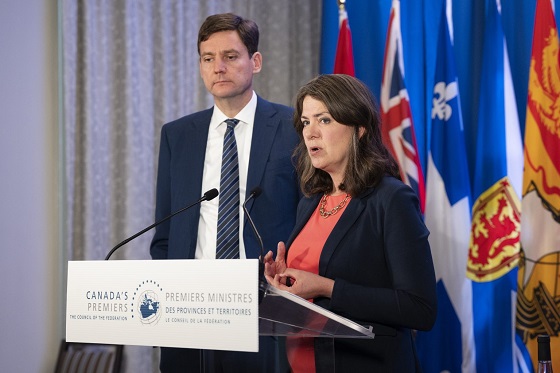
From Resource Works
Life in a federation is mostly hard, but worth the effort and frustration. We should keep that in mind when we face a question like: Should there be a second oil pipeline to Canada’s Pacific Coast?
We should also remind ourselves of the chain of events that led eligible voters in the Colony of British Columbia to choose Canada over the United States, and what the British North America Act stated about such decisions at that time and still today.
Section 92 of the Constitution stipulates that infrastructure projects that connect or run through provinces fall within federal jurisdiction. It clearly states that Parliament may declare a project which is wholly situated within one province to be “…for the general Advantage of Canada or for the Advantage of Two or more of the Provinces.”
Many crucial events took place between 1867 and 1871, the year B.C. entered Confederation. Canada and the United States were in a race across North America to the Pacific.
The United States had reached Washington State and Alaska by 1867, which posed a threat to Canada. In 1870, Canada acquired from the Hudson’s Bay Company the land that is today Manitoba, Saskatchewan, Alberta, Yukon, the Northwest Territories, and Nunavut. Both the United States and Canada competed for BC.
The Colony of British Columbia was having infrastructure debt problems, as Britain was becoming a less enthusiastic sponsor. Canada won the competition in part because of Upper Canada’s British roots, but the deal was sealed by promising to build a transcontinental railway.
B.C.’s entry to Confederation had everything to do with a transportation corridor. Ever since, Canada has relied upon B.C. to be an ever-expanding transportation and energy corridor, and the province has delivered. Today, B.C. hosts the largest and third-largest deep-sea ports in the country, as well as the only oil and natural gas pipelines to tidewater.

I agree with Premier Eby that BC’s contribution has been taken for granted, as have other western provinces. However, I disagree with the dismissive arguments he is making about Alberta’s goal to significantly increase oil production, in particular, relying on the point that there is no proponent.
Premier Smith, Federal Minister Hodgson, and potential proponents are all clearly acknowledging that fact. They also demonstrate a clear understanding of the requirements for adding the proposed project to the Major Projects List. The purpose of Alberta’s undertaking is an attempt to reach that threshold.
It is intellectually dishonest not to acknowledge the shattering of investor confidence and the erosion of trust among global customers in Canada’s ability to deliver another oil pipeline.
Both Premier Smith and Minister Dix appeared on CTV’s Power Play this past week. I cheered them both on and thought each did a good job. It was entertaining, but not political theatre. The debate was an expression of opposing viewpoints within a pluralistic and democratic country.

The argument that TMX is not at capacity is true but irrelevant. If the dredging is completed on schedule, the terminal will be capable of reaching full capacity as early as Christmas 2026, bringing total rail and pipeline capacity to approximately 4.8 million barrels per day. Production in Western Canada in July 2025 was 4,303,045 barrels per day.
Saskatchewan has set a 2030 target of 600,000 barrels per day, and projections indicate that Alberta’s 2034 production goals will reach 4.7 million barrels per day. This raises the need for an increased transport capacity to approximately 5.3 million barrels.
It is a fair point made by Premier Eby and Minister Dix that 10 years ago, a social licence trade-off was made with coastal First Nations in exchange for accepting LNG on the North Coast. Many things have changed since then that warrant a thoughtful second look.
There has been a general stagnation in living standards for something like eighty percent of the population. Public debt is rising to a level that is threatening many public services. The breakdown in relations with the United States is attacking our economy and sovereignty.
We have come to realize that we need billions of dollars annually to fortify the Arctic regions, protecting our northern populations and their resources from Russia and China.
Also, it has become apparent in the changing geopolitical landscape that energy resources and energy technology are essential currency for a mid-sized country to establish reliable trading partners and allies. It will get us back to the table internationally with credibility.
It is now clear that the industrialization of developing and emerging economies will not be halted. Canada has a choice to be an active, positive democratic participant or sit on the sidelines.
We now acknowledge that our proximity and dependence on the United States have defined our place in the world. We will need every asset and every comparative advantage to make that change. If we become less reliant on the United States, they will be less inclined to take us for granted.
The first proposal had the pipeline terminal at Kitimat. The project being worked on today proposes that it be changed to Prince Rupert. Many reports suggest that a route from Prince Rupert, and through Dixon Entrance, is the safest, even safer than the Burrard Inlet. This contention should be tested early in the process.

Most importantly, what has changed is that a growing number of First Nations are leading resource development. Joint regulatory processes, business, employment, and training opportunities, as well as access to rents and equity, have brought Indigenous Nations into partnerships with governments and corporations. The first equity opportunity came through the oil and gas industry.
It is reasonable to assume that the tanker ban decision made 10 years ago should be put under scrutiny. It is also sensible that potential proponents and supportive First Nations and Indigenous economic development groups engage with other First Nations in the early stages of developing an amended version of the Northern Gateway Pipeline.
It is also necessary to answer this question: What is the probability that Canada can successfully meet the consensus economic and sovereignty goals we have set for ourselves without expanding oil production?
Like it or not, oil outweighs natural gas and critical minerals in value when its entire value stream is considered.
One final thought. The NDP of old would not have objected to public ownership of an oil industry company. We should learn from the Norwegian example. Norway sold its leading oil and gas company in 2001 on the Oslo and New York Stock Exchanges. They did so because their reserves are limited, and they decided to acquire international assets, including in Canada.
Since then, Equinor has significantly expanded its asset base, and private companies now own approximately one-third of the company’s shares. Despite top-level environmental regulations, and the fact that the people of Norway hold two-thirds of the shares, private investors have confidence.
Jim Rushton is a 46-year veteran of BC’s resource and transportation sectors, with experience in union representation, economic development, and terminal management.
-

 Red Deer23 hours ago
Red Deer23 hours agoThe City of Red Deer’s Financial Troubles: Here Are The Candidates I Am Voting For And Why.
-

 COVID-192 days ago
COVID-192 days agoConservative MP slams Freedom Convoy leaders’ sentencing as ‘political persecution’
-
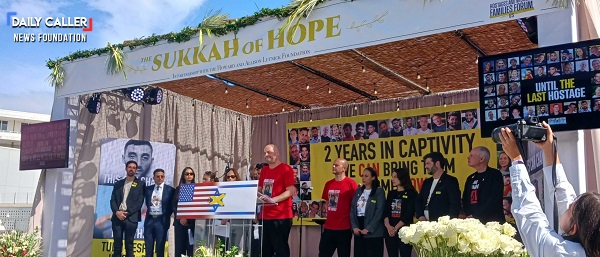
 Daily Caller2 days ago
Daily Caller2 days ago‘We’re Really, Really Close’: Freed Gaza Hostages, Relatives Have High Hopes For Trump’s Peace Plan
-
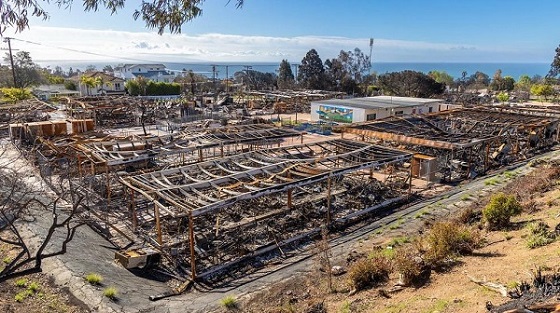
 Daily Caller2 days ago
Daily Caller2 days agoMan charged with starting Palisades Fire in L.A.
-

 Business22 hours ago
Business22 hours agoCall for Federal Inquiry as Pressure Mounts for Release of Buried Report on Buddhist Land Transactions in PEI
-
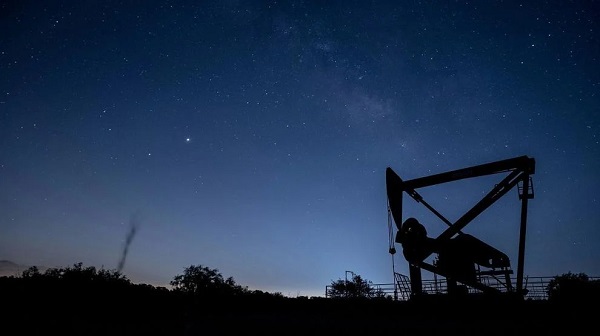
 Energy2 days ago
Energy2 days agoUS oil production reached record-high 13.6 million barrels a day in July
-
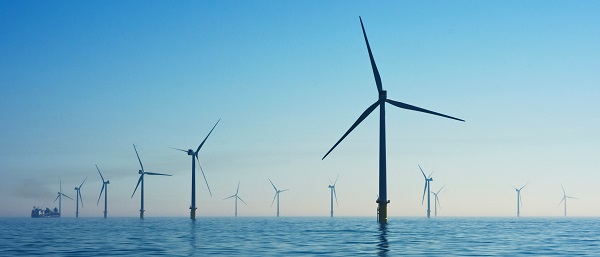
 Daily Caller1 day ago
Daily Caller1 day agoNow Is A Great Time To Be Out Of America’s Offshore Wind Business
-

 COVID-191 day ago
COVID-191 day agoCanadian commentators call Freedom Convoy leaders’ sentences ‘onerous,’ ‘too stiff’






